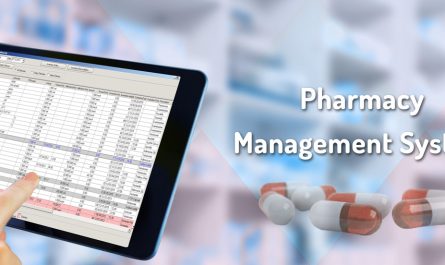
Antibiotic Usage in Poultry Farming
Antibiotics have long been used in poultry farming to promote growth and prevent diseases in chickens raised for meat and eggs. While antibiotics can benefit farm operations and animal health when used judiciously, their overuse and misuse also poses risks that need attention.
Early studies found that supplementing poultry feed with low doses of antibiotics led to increased weight gain in chickens. This was attributed to antibiotics modifying the gut microbiome and intestinal conditions in a way that enhances nutrient absorption. As a result, antibiotic growth promoters (AGPs) became widely adopted by the poultry industry globally from the 1940s onward to boost production efficiency.
Today, antibiotics remain an important tool for disease prevention and treatment on poultry farms. However, their non-therapeutic use only for growth promotion is now banned in the European Union and some other regions due to safety concerns. The United States allows AGP use but is considering tighter regulations to curb overuse and misuse.
Why Antibiotics Pose Risks
The major public health concern associated with antibiotic overuse in food animal production is the development and spread of antibiotic-resistant bacteria. When chickens ingest antibiotics, whether for growth promotion or disease treatment, not all bacteria in their system are killed. Some resistant bacteria may survive and multiply. These bacteria can potentially transfer their resistance genes to other microbes.
Resistant bacteria from poultry meat and eggs, or poultry farm environments, can infect humans through the food supply or contact with livestock. If people are infected with these superbugs, the antibiotics used as a last resort to treat serious bacterial infections may become ineffective. This compromises antibiotic efficacy and threatens modern medical practices that rely on effective antibiotics.
Other risks include antibiotic residues remaining in poultry meat and eggs consumed by people. While regulatory limits are in place worldwide, improper withdrawal of antibiotics before slaughter could potentially lead to low-level exposure and health impacts in sensitized individuals. Studies also link long-term AGP use to increased virulence of zoonotic bacterial strains on poultry farms.
Responsible Antibiotic Use in Poultry Production
Given these risks, balancing antibiotic efficacy with judicious use is imperative for sustainable poultry production and public health protection. Various practices help achieve this:
– Restricting non-therapeutic antibiotic use only for disease treatment, not growth promotion. Therapeutic antibiotics should only be used under veterinary oversight based on culture and sensitivity testing.
– Improving biosecurity measures to prevent disease entry and transmission within poultry farms through disinfection, visitor control, all-in/all-out production, etc. Strong biosecurity reduces the need for antibiotics.
– Developing alternative growth promoters through optimized nutrition, probiotics or prebiotics, competitive exclusion techniques, etc. to maintain production without antibiotics.
– Monitoring antibiotic use volumes and patterns on farms to identify over-prescription or misuse. Record-keeping aids antimicrobial stewardship programs.
– Testing poultry meat for antibiotic residues to verify withdrawal periods are properly followed before slaughter. Testing confirms consumer safety.
– Educating poultry farmers, vets and the community on rational antibiotic use and resistance risks to change practices and behaviors over time.
Adopting a balanced, evidence-based approach through these Integrated Pest Management strategies helps sustain antibiotic efficacy while protecting public health. It ensures responsible production of wholesome and affordable poultry products long into the future.
Surveillance of Resistant Bacteria
Monitoring trends in antibiotic resistance on farms, abattoirs and retail meat is important to evaluate policy impacts over time. Resistance patterns differ by geographic region depending on local antibiotic usage and resistance spread. National and international surveillance programs provide valuable data for risk assessment and policy intervention where needed.
Surveillance cultivates bacteria from diverse sample sources like poultry ceca or feces, abattoir environmental swabs, retail chicken, farmer or slaughterhouse worker nasal swabs, etc. The bacteria are tested against a panel of clinically important antibiotics to determine resistance phenotypes. Genetic studies identify specific resistance genes and mutations.
Trend analyses comparing resistance rates over 5-10 years show if resistance is rising, stable or declining for a given drug-bacteria combination in a region. Bacterial lineages are also traced to infer transmission routes between farms and communities. This evidence guides drug stewardship and regulatory decisions to safeguard new antibiotics in the research pipeline.
Continued surveillance remains crucial given the complex, dynamic nature of resistance spread exacerbated by globalization. It evaluates the long-term impacts of measures taken to promote sustainable poultry production while balancing animal welfare, food security and public health protection concerns globally. A One Health, multi-sectoral collaboration is key to make timely evidence-based revisions to resistance containment policies.
Conclusion
In summary, antibiotics serve an important role in modern livestock production systems when applied judiciously and combined with strong biosecurity. However, their overuse poses serious public health risks through accelerated resistance development. A balanced, integrated strategy is needed where antibiotic growth promotion is restricted and therapeutic use optimized through alternative prevention methods, good hygiene practices, veterinary oversight and residue monitoring programs. Continued surveillance and research help understand changing resistance trends to safeguard new drug pipelines. Collective global efforts are vital for the responsible production of safe, affordable animal protein long into the future.
*Note:
1. Source: Coherent Market Insights, Public sources, Desk research
2. We have leveraged AI tools to mine information and compile



